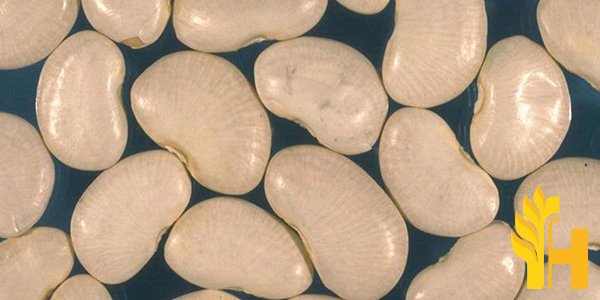Butter Bean price

Where to buy and sell Butter Bean, lowest (cheapest) and highest price.
check offers buy sell Butter BeanToday price for Butter BeanButter Bean wholesale prices 2022
The Current commodity price of Butter Bean per kg, pound in the world in the global markets
butter beans
Price range: 53 - 53 INR / 1 kg | Market: Thoothukudi Wholesale Market | Date: 2025-01-30
butter beans
Price range: 48 - 48 INR / 1 kg | Market: Viluppuram Wholesale Market | Date: 2025-01-16
butter beans
Price range: 53 - 53 INR / 1 kg | Market: Thoothukudi Wholesale Market | Date: 2025-01-09
butter beans
Price range: 47 - 47 INR / 1 kg | Market: Viluppuram Wholesale Market | Date: 2025-01-02
butter beans
Price range: 55 - 55 INR / 1 kg | Market: Viluppuram Wholesale Market | Date: 2024-12-20
butter beans
Price range: 50 - 50 INR / 1 kg | Market: Viluppuram Wholesale Market | Date: 2024-12-09
butter beans
Price range: 55 - 55 INR / 1 kg | Market: Viluppuram Wholesale Market | Date: 2024-11-25
butter beans
Price range: 55 - 55 INR / 1 kg | Market: Viluppuram Wholesale Market | Date: 2024-11-12
butter beans
Price range: 54 - 54 INR / 1 kg | Market: Mayiladuthurai Wholesale Market | Date: 2024-11-04
butter beans
Price range: 52 - 52 INR / 1 kg | Market: Viluppuram Wholesale Market | Date: 2024-10-21
butter beans
Price range: 55 - 55 INR / 1 kg | Market: Viluppuram Wholesale Market | Date: 2024-10-17
Butter Bean
Butter bean is far from the only moniker for lima beans. Depending on where you find the beans, they may also go by one of the following names: butter peas, Gigante beans, Madagascar beans, and chad beans. Outside of North America—particularly in Australia—lima beans are known as “tender green peas.”While butter beans and lima beans are botanically distinct, the latter name is more widely used in North American English. Both names can be traced back to Peru, where they were domesticated separately. Butter beans are a cultivar of the species phaseolus lunatus, while lima beans are a cultivar of the species phaseolus vulgaris. There are numerous other species of edible bean, but those two make up the majority of distinctions in terms of cuisine and availability.
Both beans are known as legumes, which belong to the family Fabaceae. They grow within pods and feature a large, spherical shape with thick skin and small seeds. While butter beans can be smaller than their spheroidal counterparts, both types of beans feature an exterior that takes on a brownish tint.
When it comes to cooking, both beans are most widely enjoyed in a warm salad. Butter beans may also accompany crab or other seafood dishes. Lima beans are more often served with meat or poultry—particularly pork. Both types of legumes feature a number of nutritional benefits, including high levels of fiber and iron. When compared to butter beans, lima beans tend to be slightly higher in protein and sodium.
Butter beans and lima beans are both enjoyed as a warm salad and fully cooked side dish. While they're botanically distinct, the latter name is more widely used in North American English. Both names can be traced back to Peru, where they were domesticated separately. For an appetizer or a side dish, consider cooking up some butter beans. In the United States, these beans may also go by the name of lima beans. But even though these two names might seem synonymous, they actually refer to two distinct species of legume. While butter beans are a variety of lima beans, neither term is a catch-all for the species.
Global butter bean production
The top producers of butter beans are China, India, and Nigeria. In 2016, these three countries produced a combined total of 1.9 million metric tons of butter beans. The United States is the fourth largest producer of butter beans, with an output of 0.43 million metric tons in 2016. Other notable producers include Brazil, Egypt, and Myanmar. Global production of butter beans has seen significant growth in recent years. In 2011, global production was at 1.3 million metric tons. By 2016, this figure had increased to 2.6 million metric tons. The majority of this growth has been driven by increases in production in China and India. These two countries accounted for over 80% of the global production growth between 2011 and 2016. The butter bean is a type of legume that is popular in many parts of the world. It is a good source of protein and dietary fiber. Butter beans are typically used in soups, stews, and casseroles. They can also be eaten as a standalone dish. The beans can be either white or black in color. The majority of butter beans are grown in developing countries. This is due to the fact that these countries have the ideal climate for growing the legumes. Butter beans require a warm climate with plenty of rainfall. They also need well-drained soils that are high in organic matter. The global demand for butter beans is expected to continue growing in the coming years. This will be driven by population growth and the increasing popularity of legumes in many parts of the world. The top exporting countries of butter beans are currently China, India, and Myanmar. The United States is also a major importer of legumes.Download our new
Husfarm App
Stay up to date with the current prieces of agricultural products all over the world.
Do you want to sell agricultural products?
Are you an Agricultural processor looking for high-quality products to buy?
Post an ad for FREE!
